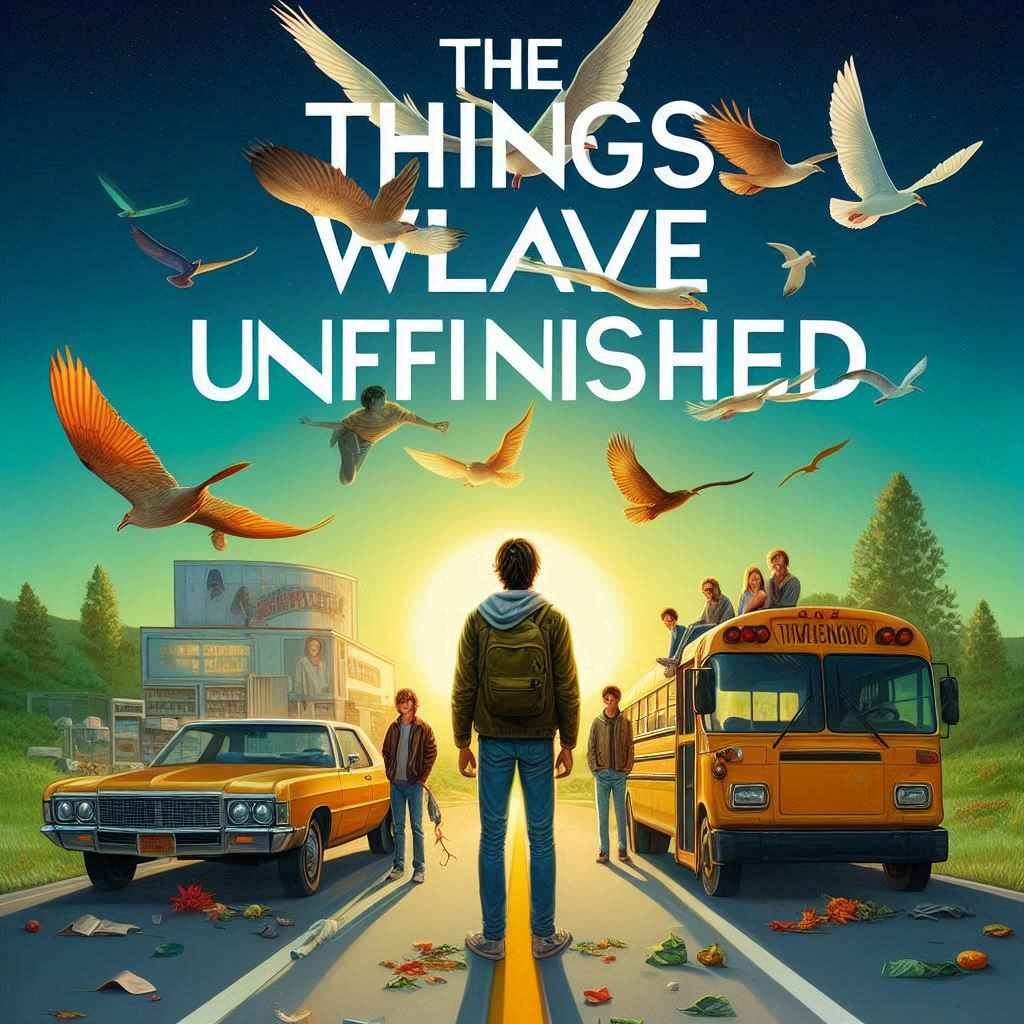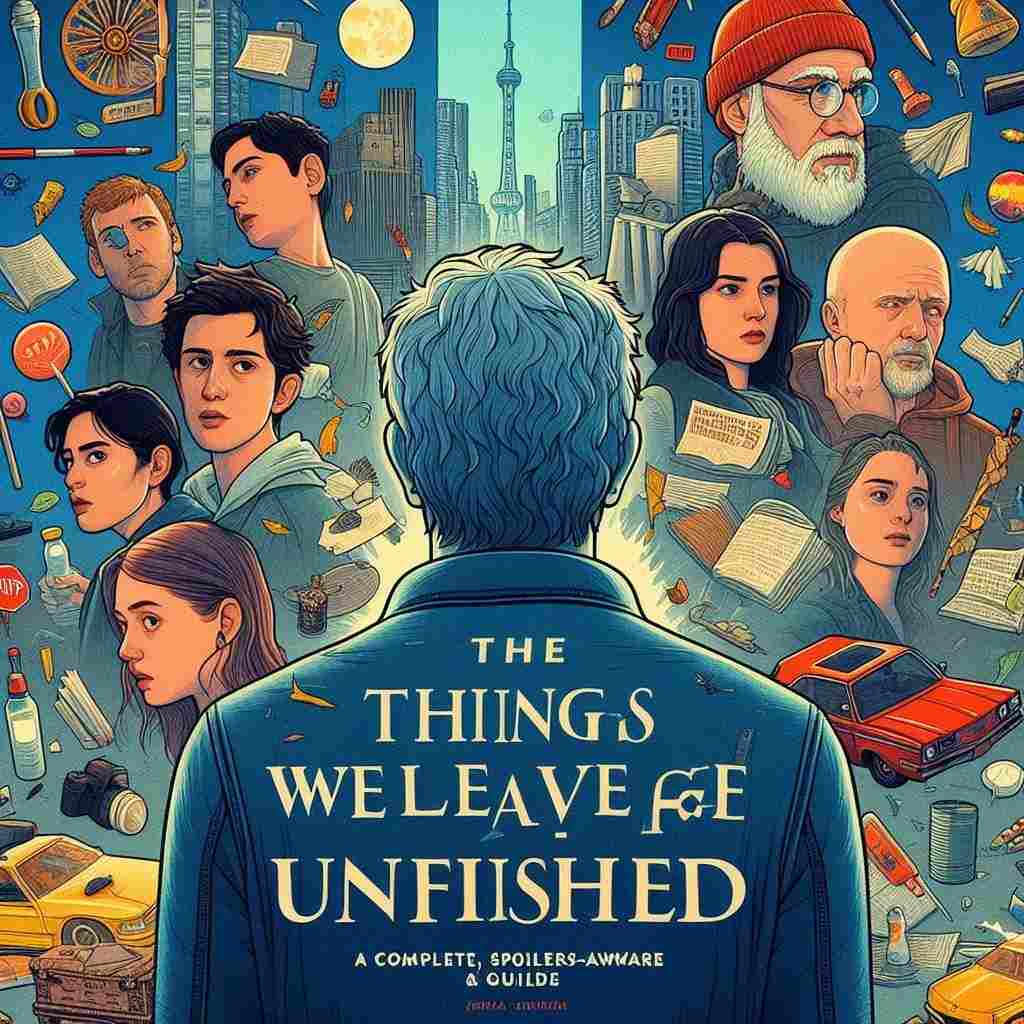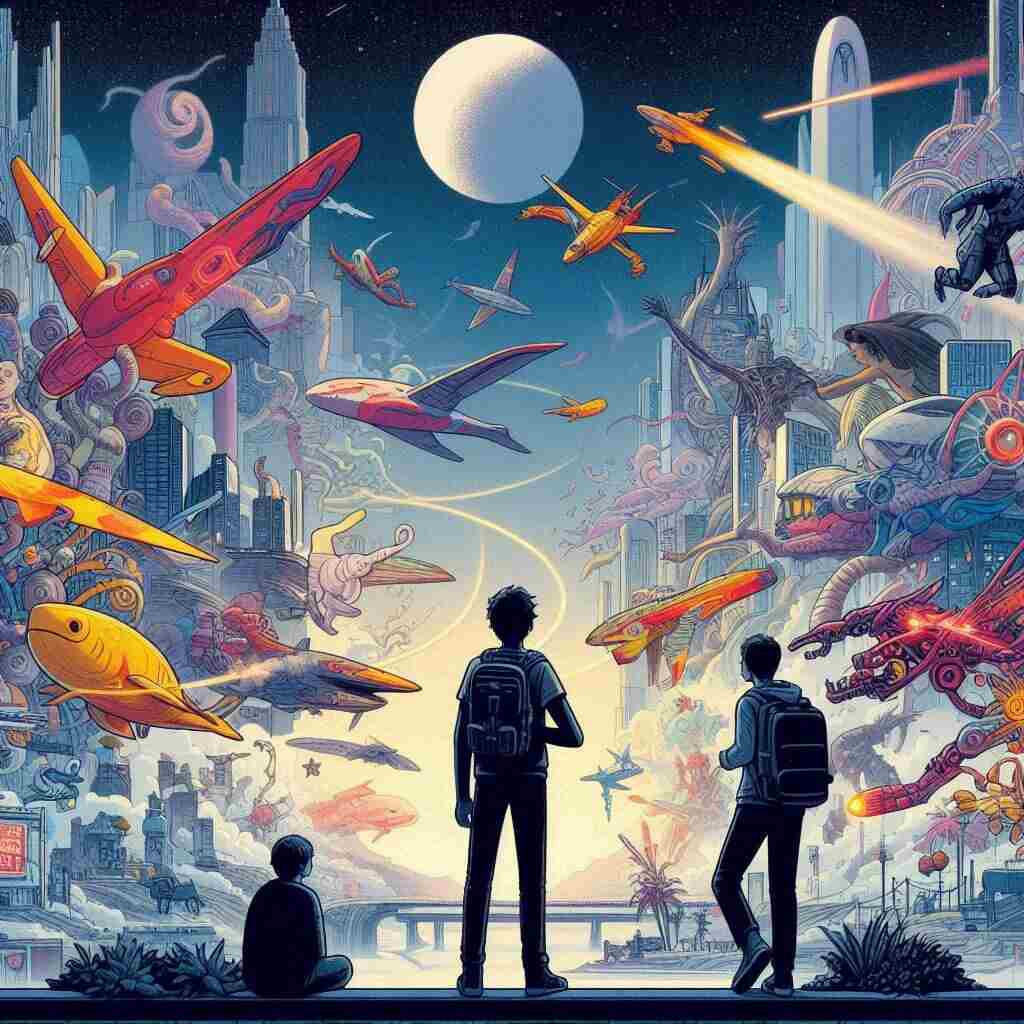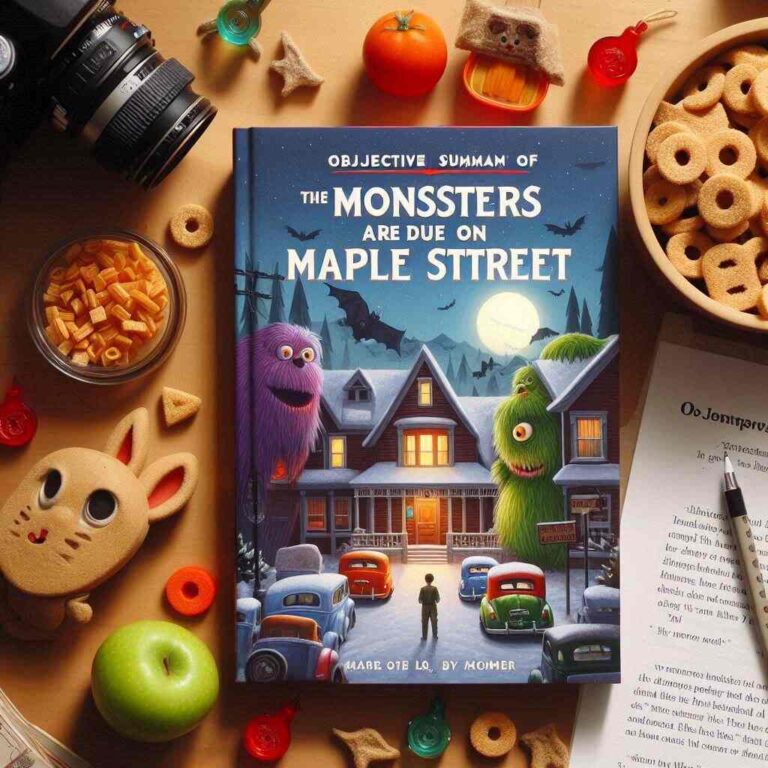The Things We Leave Unfinished Summary
What This Guide Covers
Looking for a clear, engaging summary of The Things We Leave Unfinished that also helps you understand the characters, themes, and the dual-timeline structure? You’re in the right place. This guide starts spoiler-light, then eases into deeper plot points (clearly flagged) so you can read as far as you want without regrets.
One-Minute Overview (No Spoilers)
The Things We Leave Unfinished intertwines two romances across two eras. In the present, Georgia Stanton returns to her great-grandmother’s Colorado estate after a painful divorce and clashes with Noah Harrison, a bestselling author brought in to complete her great-grandmother Scarlett’s final, unfinished novel. In the past, during World War II, Scarlett’s own love story unfolds with an American pilot, Jameson, under the shadow of war. The two timelines talk to each other—what’s revealed in the pages of the old manuscript reshapes Georgia’s future and Noah’s, too.
About the Book & Author

This standalone novel by Rebecca Yarros blends contemporary romance with historical love story, using a dual timeline to explore how the past can both wound and heal the present. Expect emotional stakes, layered family dynamics, and a romance that earns its feels without rushing them.
Spoiler Warning & How to Read This Summary
The next two sections remain spoiler-aware but light. When it’s time for the “Big Reveal & Ending,” you’ll see a clear alert. If you want only the gist, stop right before that section. If you’re here for a full breakdown—keep going.
Dual Timeline Setup

Present Day — Georgia Stanton’s Fresh Start
Georgia’s life has been burned down to the studs. After a high-profile divorce, she retreats to Colorado, where her late great-grandmother Scarlett—a celebrated romance novelist—left behind an estate, a reputation, and one legendary unfinished manuscript. Georgia isn’t just grieving. She’s guarding: Scarlett’s legacy, her own bruised heart, and the boundaries she’s only now learning to set.
WWII Era — Scarlett’s Wartime Love Story
Decades earlier, Scarlett navigates a world on fire. Air-raid sirens, ration books, and blackouts are a backdrop to a complicated love that refuses to be convenient. Her story—captured in that half-finished manuscript—holds answers and secrets that will ripple forward.
Present-Day Plot Summary

Coming Home After Divorce
Back in Colorado, Georgia is done letting other people dictate her life. The tabloids dubbed her an “Ice Queen,” but the truth is simpler: when you’re betrayed, you go numb. She pours her energy into Scarlett’s estate and papers, trying to stitch together a sense of purpose.
Meeting Noah Harrison (and Creative Sparks)
Enter Noah Harrison—a wildly successful romance author with a reputation for writing endings that leave readers clutching tissues. He’s been tapped to finish Scarlett’s unfinished book. From Georgia’s perspective, he’s the worst possible fit: too confident, too famous, and too ready to tinker with a legacy that isn’t his. From Noah’s viewpoint, Georgia is frost and fire: protective for good reason, but maybe also holding herself back.
The Battle Over a Legacy
What does it mean to “finish” someone else’s art? That question is the heart of their conflict. Georgia wants fidelity; Noah wants honesty. He argues that the truth of Scarlett’s life—however messy—belongs on the page. Georgia fears the cost of airing that truth. Their debates (okay, fights) are intellectual foreplay—two smart, stubborn people testing each other’s limits.
From Enemies to Co-Authors to Something More
Work draws them together. They sift through letters, drafts, and notes; they map timelines and hunt for missing pages. The more they read, the more Georgia sees Noah’s integrity. He’s not trying to capitalize—he’s trying to honor. Meanwhile, Noah watches Georgia unfurl from guarded to brave. The result is a slow-burn romance that feels grounded: attraction builds, trust takes root, and collaboration becomes intimacy.
WWII Plot Summary
Scarlett’s Duty, Defiance, and a Pilot Named Jameson
Scarlett begins as a daughter of privilege in wartime Britain, but her choices are her own. She meets Jameson—an American flying with Allied forces—whose courage on sorties matches his gentleness off duty. Their chemistry is immediate; their reality is peril.
Love in a Time of Air Raids
Wartime love is all urgency. Hours together are stolen; promises are made with the understanding that the next mission might be the last. Scarlett writes because it’s how she makes sense of a world that refuses to make sense. Jameson flies because it’s how he can live with himself. They build a fragile sanctuary between raids and telegrams, always aware that fate has its own pen.
Sacrifices, Secrets, and the Unfinished Manuscript
As casualties mount and news darkens, Scarlett faces choices with no good options. The “unfinished” in her manuscript isn’t just missing chapters—it’s the imprint of a life interrupted. The gaps on the page mirror the gaps in her heart: things felt but never said, truths known but never spoken aloud.
The Big Reveal & Ending (Major Spoilers Ahead)
What the Manuscript Finally Confirms
When the missing pieces surface, the manuscript clarifies why Scarlett never finished her story: doing so would have forced her to put irrevocable truths in black and white. Those truths involve love, loss, and the complicated way wartime decisions ripple through generations. The reveal reframes family relationships and resolves lingering questions about lineage, loyalty, and what really happened to the people Scarlett loved.
Why the Past Changes the Present
For Georgia, knowledge is liberation. Understanding Scarlett’s choices helps her forgive, grieve honestly, and choose courage over retreat. For Noah, finishing the book isn’t about glory—it’s about telling the story the way Scarlett intended: tender where possible, unflinching where necessary. Their present-day romance lands in a place that feels earned—hopeful, mature, and rooted in truth—while the WWII arc closes in a bittersweet register that honors the reality of war and the tenacity of love.
Main Characters at a Glance
Georgia Stanton
A woman rebuilding from the wreckage of betrayal. Georgia’s arc is about voice and agency—moving from defense to creation, from protecting the past to authoring her future.
Noah Harrison
A bestselling novelist who hides vulnerability behind bravado. Noah believes stories should tell the truth even when it hurts. His chemistry with Georgia crackles because they challenge each other to be braver on (and off) the page.
Scarlett Stanton
The axis on which both timelines turn. Scarlett’s life—its beauty and its wounds—animates the manuscript and, by extension, Georgia’s choices. She’s a portrait of strength that doesn’t pretend not to bleed.
Jameson Stanton
An American pilot whose courage is matched by tenderness. Jameson embodies wartime love: fierce, fleeting, unforgettable. His presence is a promise—and a question—about what survives when the world ends and begins again.
Key Side Characters (Ava, Constance, William, and more)
From loyal friends to complicated family members, the supporting cast adds texture—voices that test loyalties, deepen stakes, and keep the plot honest about how messy love and legacy can be.
Themes & Ideas
Love Across Time
The novel argues that love isn’t bound by simultaneity. A choice in 1943 can rewrite a heart in 2025. The echoes aren’t mystical; they’re human—passed through stories, habits, and the courage to face what really happened.
Art, Truth, and Who Gets to Tell the Story
Who finishes an unfinished work—and how—matters. The book wrestles with consent, authorship, and legacy: is “faithful” the same as “true”? Georgia and Noah arrive at a humane answer: the truth deserves the gentlest possible telling, but it still deserves telling.
Grief, Healing, and Choosing to Begin Again
Grief is not the absence of love; it’s proof of it. Georgia learns that starting over isn’t disloyalty to the past—it’s the only way to honor it. Healing here looks like openness: to collaboration, to risk, to another ending than the one you feared.
Symbols & Motifs
The Unfinished Manuscript
It stands for everything we leave unsaid—projects stalled by fear or circumstance, conversations we avoid, versions of ourselves we set aside. Completing it is an act of reclamation.
Letters, Drafts, and Wartime Mementos
Paper is memory in this story. Notes, drafts, and keepsakes operate like time machines, delivering context that living people can no longer provide.
Setting & Structure
Colorado in the Present
Mountains, a quiet estate, and the hush after scandal form a cocoon where Georgia can hear herself think. The stillness contrasts with the emotional noise of her divorce and the storm of media attention.
Britain and the Front in the 1940s
Blackouts, rationing, and air raids create an ever-present drumbeat of danger. The stakes in Scarlett’s world are existential, which magnifies every choice she makes.
Alternating POVs and Pacing
The dual structure is a braid. Every present-day discovery knots or loosens the WWII thread, and vice versa. The effect is propulsive but not rushed—you feel both romances develop in ways that make the ending land.
Who Will Love This Book
- Readers who enjoy dual timelines and intergenerational secrets.
- Romance fans who want chemistry plus character growth.
- Historical-fiction readers who appreciate the personal scale of wartime stories.
- Anyone who has ever stared at an unfinished thing—book, conversation, dream—and wondered if it’s too late to finish it.
Key Takeaways
- The novel pairs a contemporary slow-burn with a wartime love story and lets each enrich the other.
- “Unfinished” doesn’t always mean “incomplete”—sometimes it means “not yet told.”
- The past can’t be changed, but the story you choose to carry forward absolutely can.
Conclusion
The Things We Leave Unfinished is a love letter to second chances—on the page and in real life. Georgia and Noah don’t just finish a manuscript; they finish a conversation that began decades earlier. Scarlett’s choices hurt, heal, and ultimately guide. By the end, you don’t just understand why the book was left unfinished—you understand why finishing it matters. It’s not about perfect closure. It’s about honest, compassionate truth, and the courage to write the last chapter when your hands won’t stop shaking.
FAQs
Q1. Is The Things We Leave Unfinished a standalone or part of a series?
It’s a standalone. You can jump in without reading anything else and get a full, self-contained story.
Q2. What genres does it blend?
Contemporary romance, historical romance, and women’s fiction—with a strong family-saga thread.
Q3. How heavy are the wartime elements?
They’re central to the historical timeline. Expect air raids, military missions, and losses typical of WWII narratives—handled with sensitivity.
Q4. Is the present-day romance more enemies-to-lovers or grumpy-sunshine?
A little of both. Georgia and Noah start off combative and guarded, then warm into trust and partnership.
Q5. Does the book have a happy ending?
The contemporary arc lands in a hopeful, satisfying place. The WWII storyline is more bittersweet, true to its historical reality.
Q6. What’s the significance of the unfinished manuscript?
It’s the story’s heart—a literal and symbolic bridge between timelines, forcing characters to confront truths they’ve avoided.
Q7. How is the pacing?
Deliberate but engaging. The dual timelines feed one another so moments of discovery hit emotionally and thematically.
Q8. Are there major twists?
Yes. Key revelations about the past reshape how the present-day characters see themselves and their family history.
Q9. Is there strong language or spice?
It’s character-first rather than explicit-first. Romance readers comfortable with mainstream contemporary titles should feel at home.
Q10. Who would enjoy this most?
Readers who love emotionally intelligent romance, intergenerational mysteries, and stories about art, truth, and second chances.







